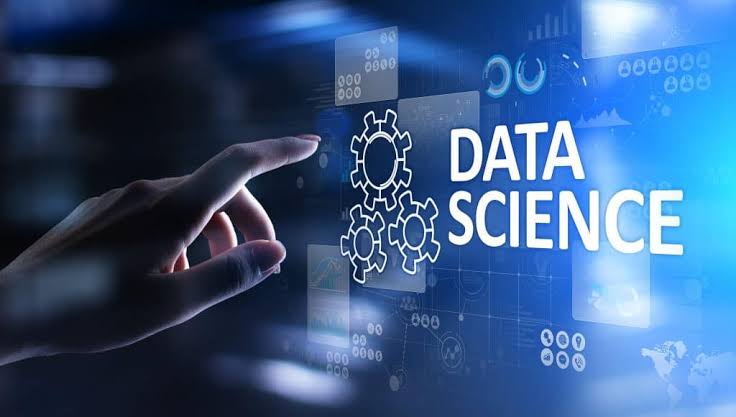
In today’s data-driven world, data science has emerged as a pivotal discipline, shaping industries and transforming the way we make decisions. This field combines statistical analysis, computational techniques, and domain expertise to extract valuable insights from vast amounts of data. As organizations increasingly recognize the power of data, understanding data science and its applications becomes essential. This article explores the fundamentals of data science, its key methodologies, and its impact on various sectors.
Understanding Data Science
Data science is an interdisciplinary field that leverages scientific methods, processes, algorithms, and systems to extract knowledge and insights from structured and unstructured data. It encompasses a range of activities, including data collection, cleaning, analysis, and interpretation. The goal is to convert raw data into actionable information that can guide decision-making and drive strategic initiatives.
The field of data science is often associated with several core components:
- Data Collection: Gathering data from various sources, including databases, sensors, social media, and transactional systems. This step involves ensuring data quality and relevance.
- Data Cleaning: Processing and cleaning the collected data to handle missing values, remove duplicates, and address inconsistencies. High-quality data is crucial for accurate analysis.
- Exploratory Data Analysis (EDA): Analyzing data sets to summarize their main characteristics, often using visual methods. EDA helps in understanding patterns, relationships, and anomalies in the data.
- Modeling and Algorithms: Applying statistical models and machine learning algorithms to make predictions, classify data, or identify trends. This step involves selecting the appropriate techniques based on the problem at hand.
- Interpretation and Communication: Translating the results of data analysis into meaningful insights and communicating findings effectively to stakeholders through reports, dashboards, and visualizations.
Key Methodologies in Data Science
Data science employs a variety of methodologies and techniques, including:
- Statistical Analysis: Using statistical methods to analyze data and infer properties about a population. Techniques include hypothesis testing, regression analysis, and analysis of variance (ANOVA).
- Machine Learning: A subset of artificial intelligence (AI) that involves training algorithms to learn from data and make predictions or decisions. Machine learning includes supervised learning (e.g., classification, regression), unsupervised learning (e.g., clustering, dimensionality reduction), and reinforcement learning.
- Data Mining: Extracting patterns and knowledge from large datasets using techniques such as clustering, association rule mining, and anomaly detection. Data mining helps uncover hidden relationships and trends.
- Predictive Analytics: Using historical data and statistical models to forecast future outcomes. Predictive analytics is widely used in areas like finance, marketing, and risk management.
- Big Data Technologies: Leveraging tools and platforms designed to handle large volumes of data, such as Hadoop and Spark. Big data technologies enable scalable processing and analysis of massive datasets.
Applications of Data Science
Data science has a profound impact across various industries, driving innovation and improving efficiency. Some notable applications include:
- Healthcare: In healthcare, data science is used to analyze patient records, predict disease outbreaks, and personalize treatment plans. Predictive models can identify patients at risk of developing certain conditions, enabling early intervention and better health outcomes.
- Finance: Financial institutions use data science for fraud detection, risk assessment, and algorithmic trading. By analyzing transaction data and market trends, banks and investment firms can make informed decisions and enhance security.
- Retail: Retailers leverage data science to optimize inventory management, personalize customer experiences, and analyze buying patterns. Recommendation systems, driven by data science, suggest products to customers based on their preferences and past behavior.
- Transportation: In transportation, data science helps optimize routes, manage traffic, and improve safety. For example, ride-sharing companies use data to match drivers with passengers efficiently and predict demand in different areas.
- Manufacturing: Data science aids in predictive maintenance, quality control, and supply chain optimization. By analyzing sensor data from machinery, manufacturers can anticipate equipment failures and reduce downtime.
Challenges and Future Directions
Despite its potential, data science faces several challenges:
- Data Privacy and Security: Ensuring the privacy and security of sensitive data is crucial. Compliance with regulations such as the General Data Protection Regulation (GDPR) is essential for maintaining trust.
- Data Quality: Poor-quality data can lead to inaccurate results and misleading insights. Ensuring data accuracy, completeness, and consistency is a continuous challenge.
- Skill Gap: The demand for skilled data scientists exceeds the supply. Organizations must invest in training and development to build expertise and keep up with evolving technologies.
Looking ahead, education will continue to evolve with advancements in AI, machine learning, and big data technologies. Emerging trends such as explainable AI and automated machine learning are expected to enhance the field’s capabilities and applications.
Conclusion
Data science is at the heart of the modern digital era, providing valuable insights and driving innovation across industries. By leveraging advanced techniques and methodologies, organizations can harness the power of data to make informed decisions, optimize operations, and create competitive advantages. As the field continues to advance, the ability to effectively analyze and interpret data will be increasingly vital for success in a data-driven world.



